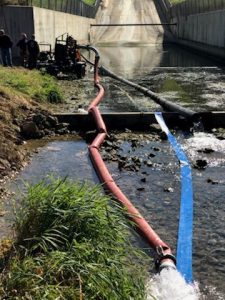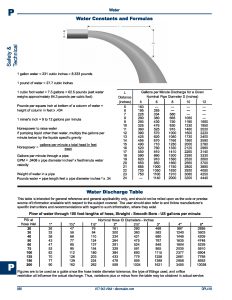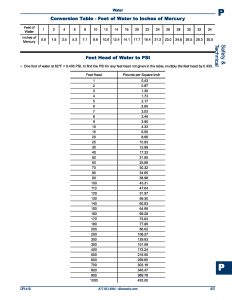 Discharge hose is often considered to be a relatively inexpensive necessity in a pump installation or long term pump rental. In comparison to the cost of equipment, hose may not be of high expense, but it can erode potential profit when incorrectly estimated. It can also be the cause of downtime, poor performance, and frustration when incorrectly selected. While discharge hose is often an afterthought, it should be given careful consideration. Here we will review a few issues to factor in when properly selecting discharge hose.
Discharge hose is often considered to be a relatively inexpensive necessity in a pump installation or long term pump rental. In comparison to the cost of equipment, hose may not be of high expense, but it can erode potential profit when incorrectly estimated. It can also be the cause of downtime, poor performance, and frustration when incorrectly selected. While discharge hose is often an afterthought, it should be given careful consideration. Here we will review a few issues to factor in when properly selecting discharge hose.
Hose Size: This may be as simple as determining the required pump size correctly, and then purchasing hose that fits that pump. Other times discharge hose may be sized up in order to reduce restriction. Too large of a hose and there may not be pressure to keep a lay-flat hose open, which may also create restriction. PVC layflat hose has very low friction loss (under 1 lb per 100 feet in most cases) Here are some water GPM and PSI formulas and tables:
Water formulas and discharge table: Feet Head of water to PSI table:
Hose Type: While many companies defer to the cheapest option, it may prove more economical to upgrade to a heavier grade hose. If the hose application is low pressure, open ended, and will not be dragged around or abused, then blue PVC lay flat may be sufficient (there are thinner imported hoses around that will not wear as well, our type 7801 blue lay flat hose is designed for contractor & agricultural use). If the hose will see moderate pressure, or will be dragged around a bit more, upgrading to the type 7801R HD PVC lay flat or type 3200 mill discharge hose would be beneficial. If a hose will see heavy use, has potential to be run over (never recommended) or will be in more extreme climates, a rubber discharge hose would minimize replacement frequency and downtime.
Hose options with higher upfront expense may save cost and time later, and reduce the environmental impact.
Beyond discharge hose, often times a suction hose is utilized in pump discharge applications. From a submersible pump to flat ground, or other tight bends, a rigid suction hose may perform better. Type 7962 corrugated PVC or type 9901 wire reinforced suction hose will reduce hose kinking on turns from the pump to flat ground. Check the pressure rating of the suction hose to ensure that it will be capable of the pump discharge pressure. If the discharge line will have potential to be cut or gouged, a suction hose may also be preferred.
Hose couplings: Cam lock couplings, threaded couplings, ball and socket couplings, if you are involved in pump use or rental then you probably have a mix of hose with various end couplings already. In a new pump configuration, take into account price and availability, but also working pressure ratings and ease of use. Ball and socket couplings are often more economical and easier to use on large diameter hose. Cam lock couplings are a good all around coupling for medium pressure hose. Threaded couplings are most often utilized on smaller less expensive and lower pressure hose assemblies. Grooved or flanged couplings are available for special configurations.
Keep in mind that you can reduce coupling expense by adding length to each assembly, but then it will be more difficult to roll and carry each length. Unrolling 300 foot rolls may seem like a good plan, until it is time to remove them from the site.
A pump can be adapted either by removing the existing coupling (if a thread or standard flange is behind it) or by configuring adapters and reducers to mate the hose to the pump outlet type. Coupling material may also be an issue depending on what is being pumped. In some agricultural applications, polypropylene couplings may be better suited.
What may seem like a simple add on to a pump purchase or rental often creates added expense and potential downtime. Choose carefully, and contact us for recommendations.

